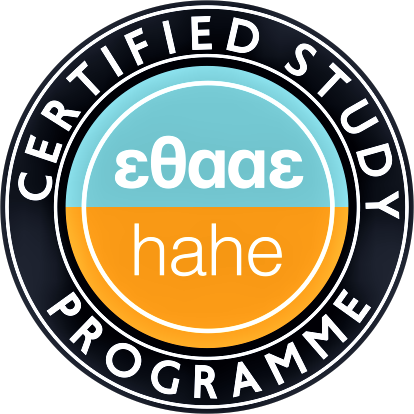Ε5. Design Thinking and Innovation
Instructor: Athanasios Androutsos
Elective, Teaching Period C, ECTS: 6,
Contents
Design Thinking. Real-world problems. Problems in humanities. The role of education in cultivating creativity, innovation, and entrepreneurship. Innovative Educational Methodologies. Necessary skills in the 21st century. Problem identification, solutions design, testing, acceptance criteria. Double Diamond Methodology. The role of users. Co-creation. User-centered Design. Criteria for designing innovative solutions. Leadership, Start with why. Design Thinking for innovation: Empathy, Define, Ideate, Prototype, Test. Design vs Design Thinking. Innovation and design thinking. Implementing solutions in the digital web-based economy. Introduction to HTML. Cascading Styling Sheets. Box Model and Div. Design and development of web pages and applications. Design heuristics. Fluid & Responsive Design. Mobile First Design. Human-computer interaction (HCI). User interface design. Introduction to JavaScript. UX / UI Design. User Analysis, User Personas. Journey Maps, Touchpoints. Basic principles of UX Design. Usability. Information structure design, Cards Sorting. Visualization of information. Usability Tests. Real-world problems. Special topics: Education, LMS (Learning Management System). Moodle. Universal Design in Education. Service-oriented software architectures, Open APIs, XML / JSON, HTTP, Web Servers, Hosting Services, Remote file transfer, GitHub, social media promotion, field research & multimedia documentation, video recording (videocast), entrepreneurship as a prerequisite for innovation.
Prerequisites
Students should have basic knowledge in programming (e.g. in Python)
Target Learning Outcomes
After successfully completing the course, students will be able to:
- Identify real-world problems and design innovative solutions with user participation
- Design and develop web-based pages and applications with modern technologies and methods.
- Design user interfaces based on UX / UI Design methodologies and apply them to real problems
- Demonstrate professional skills in innovative design of solutions to real-world problems, such as: collaboration, co-creation, time management, design thinking, innovation, creativity.
Recommended Bibliography
- Tim Brawn, Change by Design: How Design Thinking Transforms Organizations and Inspires Innovation, HarperBusines, 2009.
- Simon Sinek, Start with Why: How Great Leaders Inspire Everyone to Take Action, Portfolio, 2011.
- Διαφάνειες, κείμενα και αναφορές που δίνονται μέσω της ιστοσελίδας του μαθήματος. / Presentations, texts and references given through the course website.
Teaching and Learning Activities
One three-hour lecture per week.
Assessment and Grading Methods
The final grade is the average of the grade of a teamwork (project) based on the design-thinking methodology (70%) and the grade of an individual assignment and presentation on a specific topic (weight 30%).



